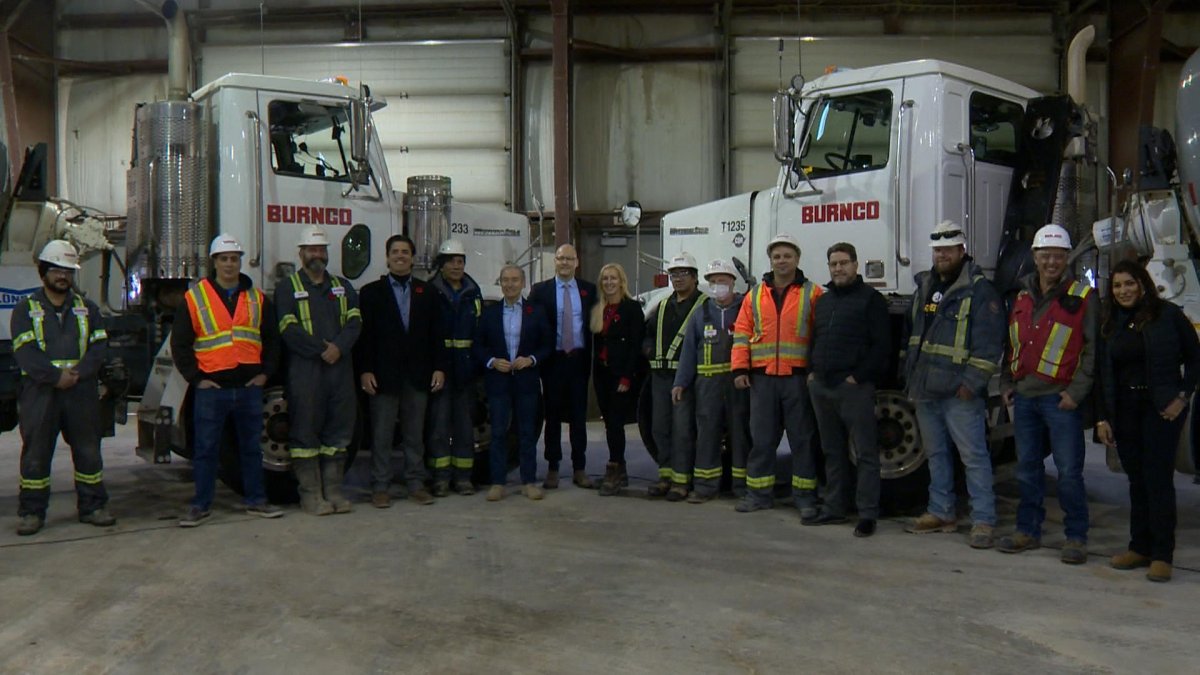François-Philippe Champagne, federal Minister of Innovation, Science and Industry, travelled to Saskatoon on Wednesday to introduce a plan to position Canada as a world leader in the production and export of low-carbon cement and concrete.

The Roadmap to Net-Zero Carbon Concrete aims to eliminate more than 15 million tonnes of greenhouse gas emissions by 2030, or the equivalent of taking three million cars off of the road. The longer-term goal is to reach true net zero by 2050.
Concrete is the most used building material on the planet and accounts for seven per cent of global CO2 emissions and 1.5 per cent of Canada’s.
“Canada’s cement and concrete industry is a leader in the fight to stop climate change,” said Adam Auer, president and CEO of the Cement Association of Canada.
The industry is working in collaboration with the Government of Canada and industry partners in the construction chain, Auer said.
“We know we can’t do it alone. Together with government, we will continue to support innovation and investment needed on our path to delivering net-zero concrete, while at the same time preserving (concrete’s) properties as a durable, resilient, versatile and cost-effective material,” Auer said
Champagne said that with the partnership, Canada will become a world-leading producer and exporter of low-carbon cement and concrete.
- Ontario First Nation declares state of emergency amid skyrocketing benzene levels
- Singh mulls TikTok return as U.S. nears potential ban over security fears
- More financial institutes are offering crypto-services, survey shows
- EV sales in Canada rose in recent years despite higher interest rates. Why?
“This will increase the adoption of low-carbon cement and concrete, leading to more jobs, more growth, and a healthier environment for all Canadians,” Champagne said.
“Together, we are working toward a more sustainable world that achieves net zero by 2050 and advances Canada’s commitment to clean growth.”
“We all understand that decarbonizing concrete is a necessity,” Champagne said. “If we’re going to build hundreds of billions of infrastructure over the next decades, we might as well do it in a sustainable way. It’s not only the right thing to do but it’s also the smart thing to do.”
“Cement is the second most consumed product on earth. So, you understand why we are here this morning,” Champagne said Wednesday.
This commitment will be funded by the $15-billion Canada Growth Fund which was created to work towards decarbonization and clean tech projects.
Canada is beginning this initiative by committing to co-lead the Glasgow Breakthrough on Cement and Concrete. This agenda will allow countries and businesses to join up and strengthen their actions through public and private global initiatives.
“Canada’s commitment to co-lead the new Glasgow Breakthrough on Cement and Concrete will provide a significant opportunity to demonstrate its global leadership in driving the adoption of low-carbon cement products and solutions,” the Government of Canada said in a media release.
“It will also bring global visibility to the measures and actions developed with the Cement Association of Canada and presented in the Roadmap to Net-Zero Carbon Concrete by 2050.”
The announcement was hosted by Burnco Rock Products Ltd., a fourth-generation family business in Saskatoon.
“We see the land as a very important gift of creation that we are the stewards of during the time that we are in possession of it,” said Tom Zias, CEO.
“These things are critically important when we think about the future generations associated with the BURNCO family, with the communities that we participate in, with the customers that demand our products to create this critical, sustainable infrastructure. It is a privilege to be part of this announcement from an ambitious initiative perspective.”







Comments